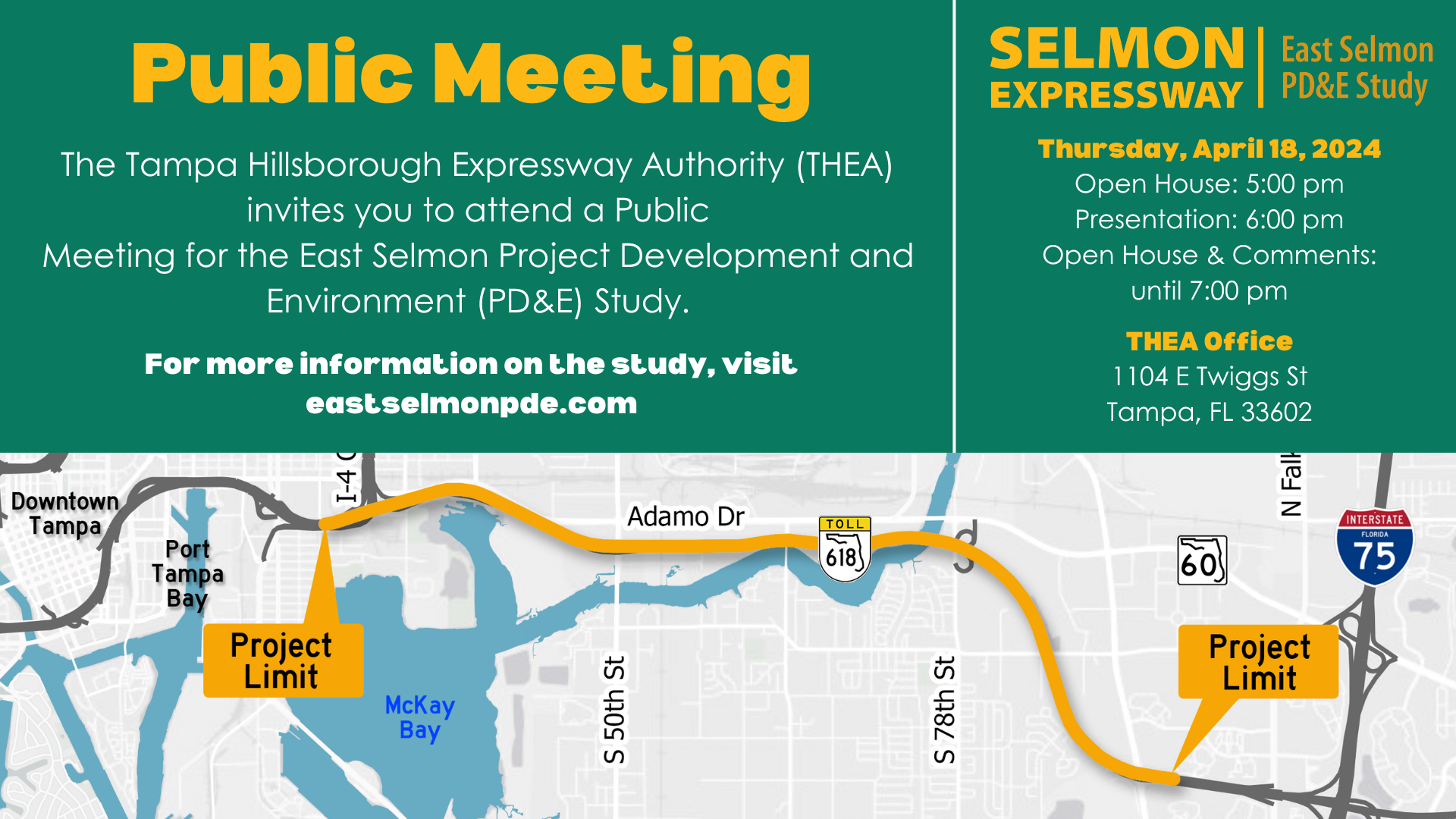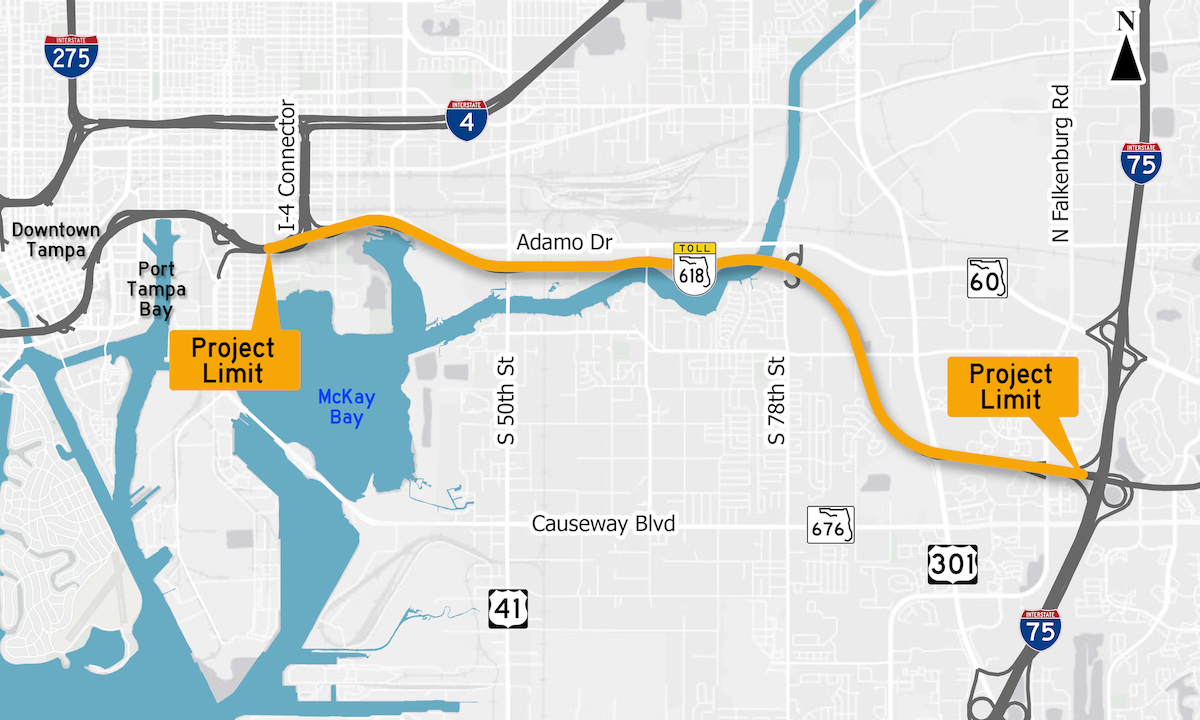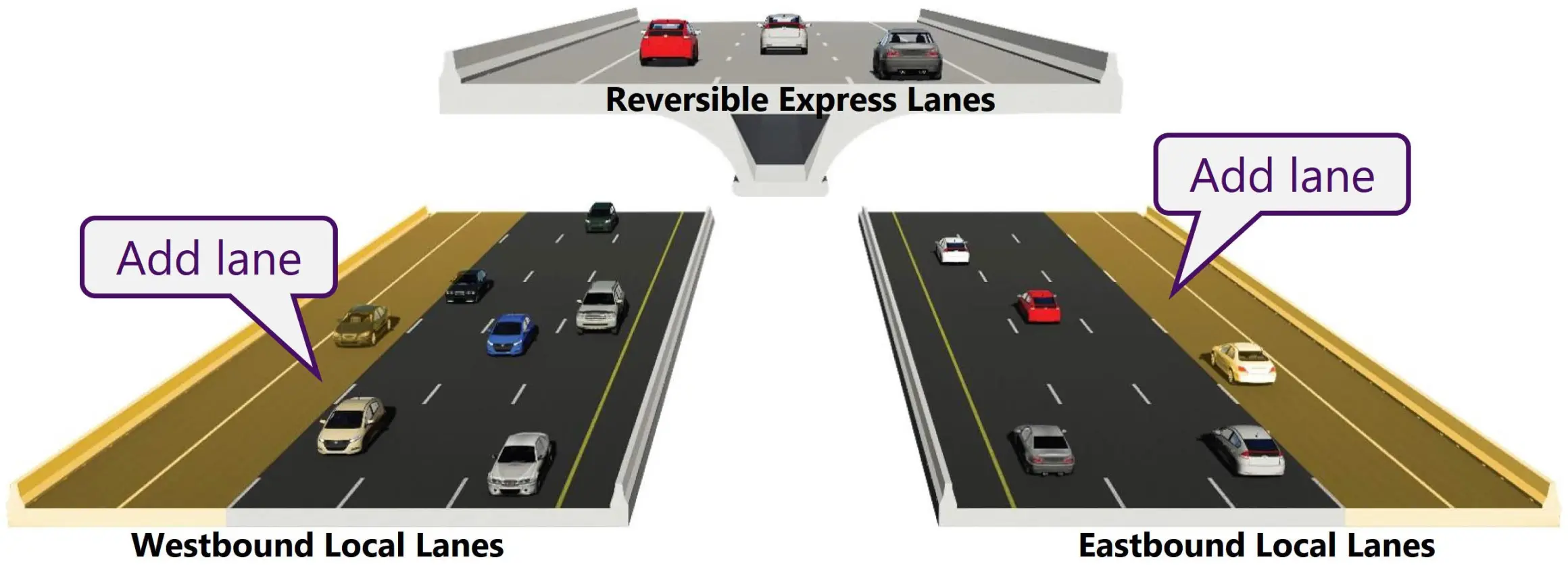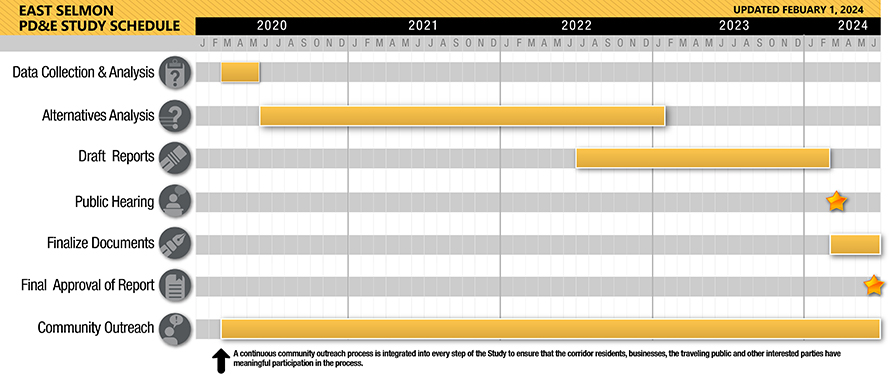
EAST SELMON PD&E STUDY
Conducted by the Tampa Hillsborough Expressway Authority
Public Meeting - Thursday, April 18th
EAST SELMON PD&E FACT SHEET
DOWNLOAD FACTSHEET
THEA Held a Public Meeting for the East Selmon Project Development and Environment (PD&E) Study on Thursday, April 18, 2024.

What is this study about?
The Tampa Hillsborough Expressway Authority (THEA) is conducting a Project Development and Environment (PD&E) Study to evaluate the needs, costs, and effects of adding additional lanes on the Selmon Expressway (SR 618) from the I-4 Connector to US 301 in Hillsborough County.
This website presents the Build Alternative considered, the process taken to get where we are, and the benefits of the project. A location map is provided below.

Why are we studying this project?
-
Reduce Congestion
Over 100,000 vehicles per day used the Selmon Expressway in 2022 (within the boundaries of the study area). By 2046, that number is expected to grow to 167,000 vehicles per day. Portions of the Tampa Bay region contributing to traffic on the Selmon Expressway are expected to grow by 85% during the same time period. Traffic will continue to get worse if nothing is done.
-
Improve Safety
Over a five-year period, there were 571 crashes within the project limits. Of those, 44% involved rear-end collisions indicating congestion as one of the primary contributing factors. Safety enhancements are needed to address THEA's Vision Zero safety goals to eliminate all traffic fatalities and serious injuries.
-
Connect Communities
The Selmon Expressway provides a daily commuter link between downtown Tampa and several densely populated areas and regional attractors. The expressway serves as an important alternative to I-275 during road closures, hurricane evacuations, and regional travel in Tampa Bay.
What is our process?
For a project to be constructed, there is a process it must follow. Right now, we are in the PD&E Study phase. A PD&E Study is an environmental and engineering process that evaluates an alternative or range of alternatives to address a transportation challenge or need while looking at the social, economic, natural, and physical environmental impacts. The PD&E process is conducted openly to ensure there are no disproportionate impacts to the community.
The PD&E Study process includes four steps –
- Develop Alternatives
- Evaluate Alternatives
- Gather Public Comments
- Select Preferred Alternative
Read through each of the four steps below to see our process and how the Preferred Alternative will be identified. Please note, a No Build Alternative is being considered throughout this study process.
-

One Build Alternative has been developed based on the conditions out there today and those anticipated in the future. Only one Build Alternative was developed as proposed improvements fit within the existing right-of-way
-

The Build Alternative was evaluated based on meeting the purpose and need of the project. During this process, enhancements and adjustments to the Build Alternative were made to maximize safety and operational benefits
-

Working with the community to ensure the best possible outcome of this study is of utmost importance to THEA. THEA worked with local governments such as City of Tampa and Hillsborough County and the Florida Department of Transportation to ensure that proposed improvements integrated with their facilities. This Public Hearing provides an opportunity for the general public to review proposed improvements, their potential impacts, and provide comments about the project
-

The comments received at the Public Hearing will help the team consider the community’s preferences, make refinements if necessary, and identify the Preferred Alternative. The Preferred Alternative is described in the section below. All comments received by April 29, 2024, will be included in the public record for the project. Comments may be submitted using the options highlighted in the “Submit a Comment” tab.
What is the Build Alternative?
The Build Alternative includes adding one travel lane in each direction along the local lanes as shown below. Between the I-4 Connector and 78th Street, the number of travel lanes would increase from two to three lanes in each direction. Between 78th Street and US 301, the number of travel lanes would increase from three to four lanes in each direction.

What are the benefits of the project?
-

Improved Capacity
- Serves an additional 28,000 daily trips
- Reduces travel times (48% reduction in the morning)
-

Improved Ramps
- More efficient traffic operations
- Improved bike/ped crossings at ramp terminals
-

Improved Safety
- 25% reduction in crashes
- Reduction of rear end crashes
- Reduction of fatal and serious injuries
What impacts are anticipated?
An evaluation was conducted to review the social, cultural, natural, and physical impacts associated with this project. All construction will occur within existing THEA property; therefore, no property acquisition or relocations are needed. In addition, no impacts to wetlands, floodplains, protected species, parks, and archaeological and historic sites are anticipated.
Noise levels are anticipated to increase as traffic levels increase. The majority of the project is fronted by industrial and commercial properties and warehousing that are not eligible for a noise wall. There are some residential neighborhoods immediately adjacent to the project area. For these neighborhoods, such as the Green Ridge Estates neighborhood, noise walls are proposed to mitigate potential impacts. Final confirmation for the need for noise walls will be made during the design phase.


